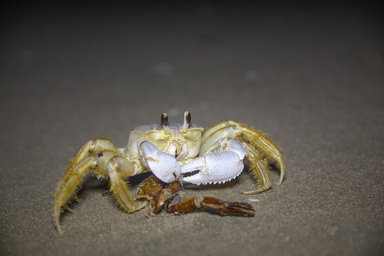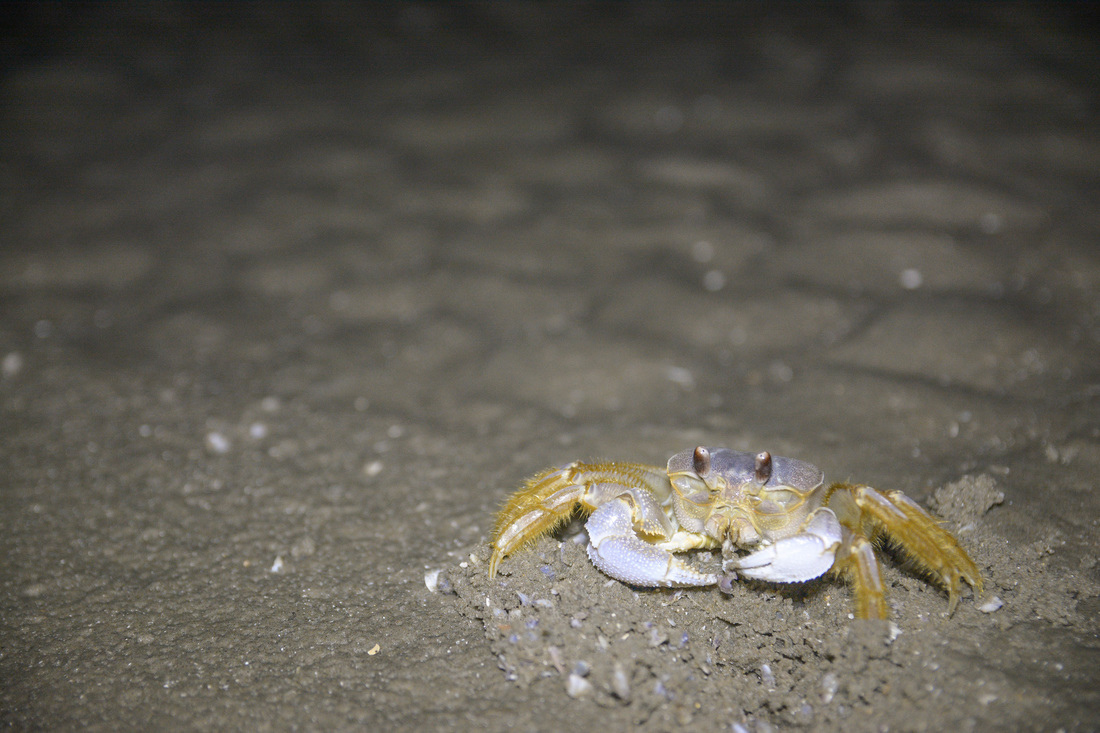Past Ghost Crabs have been fossilized in rocks dating back 2,588,000 to 11,700 years ago. Present Ghost crabs are relatively common on beaches like Assateague National Seashore, but they, like many other coastal creatures, are threatened by human impacts. One of the main threats to ghost crabs are off-road vehicles (ORVs). Driving out on the beach, ORVs can crush crabs and destroy their burrows, interfering with their reproductive cycle. ORVs greatly affect ghost crabs at night when they are feeding. Another threat to the species is a decline in their habitat. Construction along beaches, be it for residential or commercial use, can cause increased mortality and a potential decline in populations. Future In order to preserve coastal species like the ghost crab, humans need to make concerted efforts to limit habitat destruction in these already vulnerable areas. Some beaches have adopted boardwalks which allow people to get closer to the water while lessening their impact on the supralittoral zone.
The Behavioral Ecology course hosted by Chincoteague Bay Field Station took a trip to Wallops Island to study the behavior of the Ghost Crabs at night. As well as studying their actions in the presence of people and artificial light.
0 Comments
Leave a Reply. |
About
Everything you need to know about CBFS's educational programs, visiting Chincoteague Island, and more! Categories
All
Archives
January 2019
|
CHINCOTEAGUE BAY FIELD STATION | 34001 Mill Dam Road | Wallops Island, VA 23337 | (757) 824-5636 | [email protected]



 RSS Feed
RSS Feed

